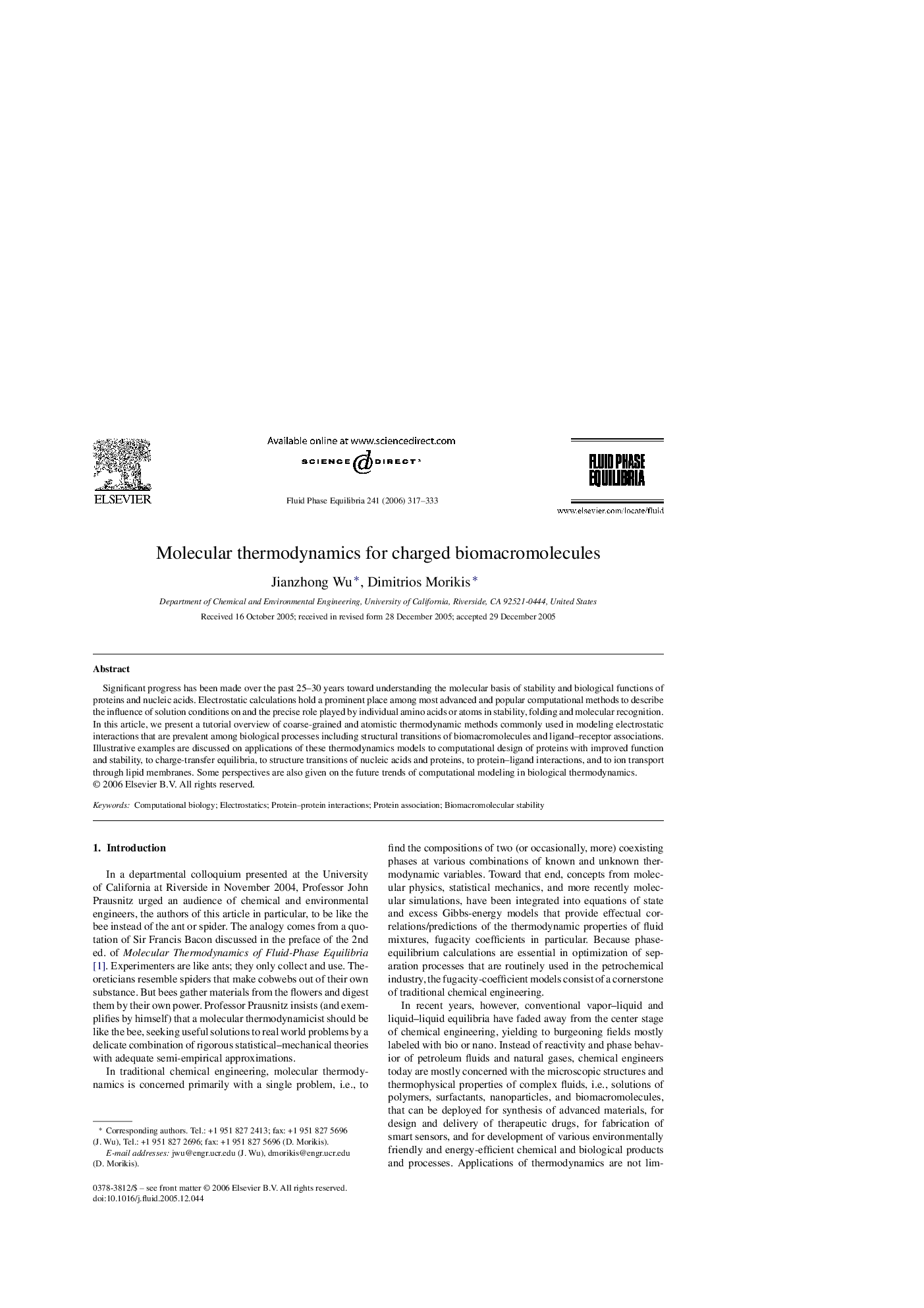| Article ID | Journal | Published Year | Pages | File Type |
|---|---|---|---|---|
| 204830 | Fluid Phase Equilibria | 2006 | 17 Pages |
Significant progress has been made over the past 25–30 years toward understanding the molecular basis of stability and biological functions of proteins and nucleic acids. Electrostatic calculations hold a prominent place among most advanced and popular computational methods to describe the influence of solution conditions on and the precise role played by individual amino acids or atoms in stability, folding and molecular recognition. In this article, we present a tutorial overview of coarse-grained and atomistic thermodynamic methods commonly used in modeling electrostatic interactions that are prevalent among biological processes including structural transitions of biomacromolecules and ligand–receptor associations. Illustrative examples are discussed on applications of these thermodynamics models to computational design of proteins with improved function and stability, to charge-transfer equilibria, to structure transitions of nucleic acids and proteins, to protein–ligand interactions, and to ion transport through lipid membranes. Some perspectives are also given on the future trends of computational modeling in biological thermodynamics.
